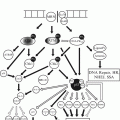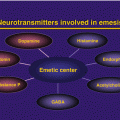Authors
Regimen
Response rate (%)
Squamous cell carcinoma
Cai HB
CDDP+5-FU
85
Kigawa J
CDDP+BLM
80
Sugiyama T
CDDP+CPT-11
78
Chen H
CDDP+MMC+5-FU
77
Yamaguchi S
NDP+CPT-11
76
Non squamous cell carcinoma
Nagao S
DTX+CBDCA
69
Saito T
CDDP+ADM+MMC
67
Zanetta G
CDDP+EPI
67
Aoki Y
CDDP+5-FU
64
Iwasaka T
MMC+VP-16+CDDP
55
Pelvic lymphnode involvement is the strongest prognostic factor in patients with cervical cancer [34, 35]. It is unknown whether patients with AC had more frequent pelvic lymphnode involvement than those with SCC. Based on our large retrospective study of 820 stage IB- IIB patients, including 280 patients with AC and 540 patients with SCC, patients with AC who had pelvic lymphnode involvement showed significantly worse outcome than those with SCC (5-years overall survival: 46.4 % vs. 72.3 %, p = 0.0005), whereas there was no difference by histological type in patients without pelvic lymphnode involvement (5-years overall survival: 91.2 % vs. 93.9 %, p = 0.4464) [36].
45.4 Adjuvant Treatment After Radical Hysterectomy
Radio-sensitivity may be also important in the treatment of patients with pathologic risk factors after radical hysterectomy. Our retrospective analysis revealed that patients with AC recurred more frequently within radiation field, such as pelvic cavity, vaginal stump, compared to those with SCC in patients receiving adjuvant radiotherapy after radical hysterectomy (24.6 % vs. 10.5 %, p = 0.0022) [36]. Peters et al. reported the randomized study on chemo-radiation versus radiation alone for pathological high-risk patients with stage IA2, IB and IIA cervical cancer [37]. Chemo-radiation was scheduled two cycles of concurrent CDDP and 5-fluorouracil and two additional cycles given after radiation. A subset analysis by histology revealed there were no significant difference in local and distant recurrence rate and outcome between AC and SCC in chemo-radiation group, whereas patients with AC showed significantly worse outcome and higher local/distant recurrence rate in radiation alone group. Our largest retrospective study also suggested that patients with AC predominantly disseminates hematogenously, whereas patients with SCC perhaps does so lymphatically [38]. Consequently, new adjuvant therapeutic strategy is necessary for pathological high-risk, especially with pelvic lymphnode involvement, patients with AC after radical hysterectomy.
45.5 Gastric-Type Mucinous Adenocarcinoma
Gastric-type mucinous adenocarcinoma (GMA), a subset of mucinous adenocarcinoma of the uterine cervix, is recently described clinicopathologic entity characterized by poor outcome and no implication of high risk HPV [39–41]. To determine underlying cause of the worse prognosis for GMA, we evaluated the chemosensitivity of GMA, which were diagnosed by central pathological review of cases enrolled in our phase II study of neoadjuvant chemotherapy with docetaxel and carboplatin for stage IB2 to IIB patients with non-SCC as accompaniment study [42]. Our study revealed that patients with GMA showed significant lower response rate than those with usual-type endocervical adenocarcinoma (UAE) (46.2 % vs. 85.0 %, p = 0.018), suggesting that GMA was distinguished from UEA by chemoresistance.
45.6 In Conclusion
While majority of current management guidelines do not take histology into consideration, we should recognize that non-SCC, including AC and ASC, might be distinct from SCC, and provide an opportunity for improving outcomes for patients with non-SCC through the development of histology-specific interventions.
References
1.
2.
3.
4.
Mabuchi S, Okazawa M, Matsuo K, Kawano M, Suzuki O, Miyatake T, Enomoto T, Kamiura S, Ogawa K, Kimura T (2012) Impact of histological subtype on survival of patients with surgically-treated stage IA2-IIB cervical cancer: adenocarcinoma versus squamous cell carcinoma. Gynecol Oncol 127:114–120CrossRefPubMed
5.
6.
7.
Stay updated, free articles. Join our Telegram channel

Full access? Get Clinical Tree





